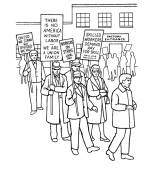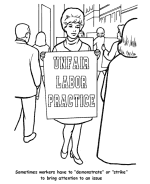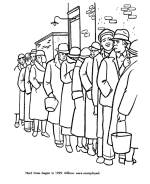


|
In the United States, Labor Day is a federal holiday observed on the first Monday in September.
In 1916, President Woodrow Wilson issued a proclamation that officially established June 14 as Flag Day; in August 1949,
National Flag Day was established by an Act of Congress.
The first Labor Day in the United States was celebrated on September 5, 1882 in New York City. In the aftermath of the deaths of a number of
workers at the hands of the US military and US Marshals during the 1894 Pullman Strike, President Grover Cleveland put reconciliation
with Labor as a top political priority. Fearing further conflict, legislation making Labor Day a national holiday was rushed through
Congress unanimously and signed into law a mere six days after the end of the strike. President Cleveland was also concerned that aligning a
US labor holiday with existing international May Day celebrations would stir up negative emotions linked to the Haymarket Affair. All 50 U.S.
states have made Labor Day a state holiday.
The form for the celebration of Labor Day was outlined in the first proposal of the holiday: A street parade to exhibit to the
public "the strength and esprit corps of the trade and labor organizations," followed by a festival for the workers and their families.
This became the pattern for Labor Day celebrations. Speeches by prominent men and women were introduced later, as more emphasis was placed
upon the economic and civil significance of the holiday. Still later, by a resolution of the American Federation of Labor convention of
1909, the Sunday preceding Labor Day was adopted as Labor Sunday and dedicated to the spiritual and educational aspects of the labor movement.
Traditionally, Labor Day is celebrated by most Americans as the symbolic end of the summer. The holiday is often regarded as a day of
rest and parades. Speeches or political demonstrations are more low-key than May 1 Labor Day celebrations in most countries, although
events held by labor organizations often feature political themes and appearances by candidates for office, especially in election years.
Forms of celebration include picnics, barbecues, fireworks displays, water sports, and public art events. Families with school-age
children take it as the last chance to travel before the end of summer recess. Similarly, some teenagers and young adults view it as
the last weekend for parties before returning to school. Traditionally, Labor Day may also be the last weekend that public pools are open at
public parks and facilities across the country.
|

